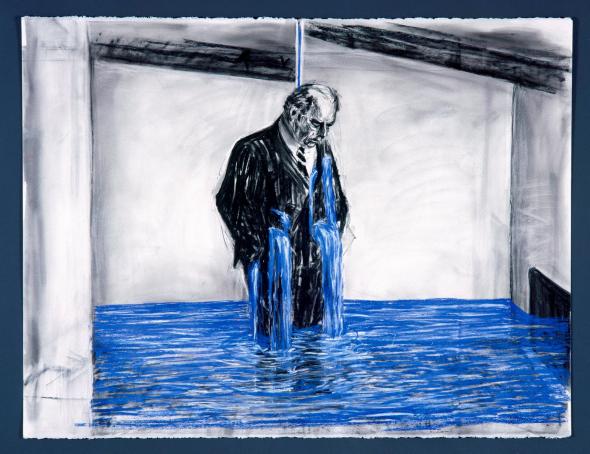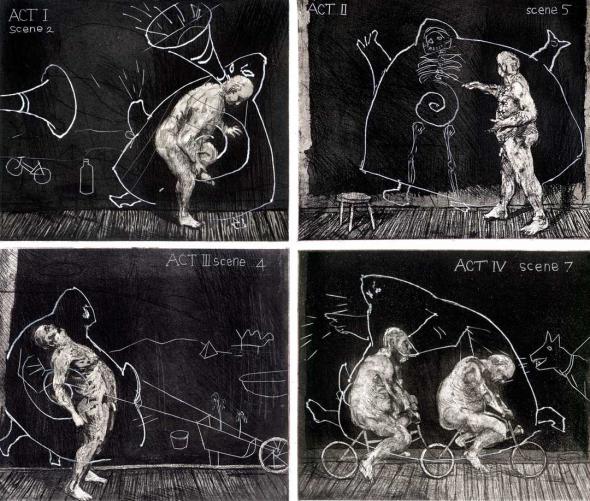2nd call - BODY: IMAGES AND GEOGRAPHIES
During the year 2013, BUALA’s team will be working for the first time on a specific theme, without abandoning our archive of materials on various topics. Thinking about the BODY, in its multiple tentacles, deployments, conflicts, realities, and utopias, is our challenge that will result in a paper publication (made possible by a successful crowdfunding campaign). Thinking about the body is, above all, a strategic need for those who want to question the normative processes of exclusion, naturalization, and production, to set in motion new ways of being in the world and new feelings, and to broaden thought horizons.
We invite BUALA’s readers and contributors to produce texts and pictures related to these and other topics. The form of the work can be of all kinds: poetry, essay, piece of journalism, impressionist writing, manifesto, provocation, … It should not exceed 1500 words and must be submitted by October 30, 2013.
Please direct your submissions to info@buala.org.
::::::::::::
In the 1st call for papers – thinking about the BODY – BODY AND PRECARIOUSNESS, the materiality of the body (embodiment) was regarded as a construction emerging from power relations responsible for guiding sex, gender, scale, etc. Some questions arose: how to include these relations in the body? How to constrain and define corporality (movement, posture, disease, sexuality…)? How to subvert these relations and status through the body? The approach to the theme we propose comes from the interaction of the three bodies, ie, from three interconnected perspectives:
- body as individual subject: phenomenological – being in the world – lived experience
- social body: representative use of the body as symbol, from which thinking nature, society, culture
- political body: regulation, vigilance, individual/collective control of the bodies.
 Felix Crying (1998-99), drawing for the film Stereoscope, by William Kentridge.
Felix Crying (1998-99), drawing for the film Stereoscope, by William Kentridge.
In this 2nd call we announce both topics together – BODY: images and geographies – by the inherent articulation between body, representations and space, which are not separate forms nor constitute an organically organized ecosystem. They build up each other correlatively. Thus, space is not present as mere neutral recipient of physical action and experience, it is first likely to influence and transform the body, simultaneously generating new representations. We witness a (more or less active) constant negotiation between body, representations and space.
We intend to reinforce the need to design bodies as sites of essential and full performance, and not as mere surfaces of discursive enrolment. As such, we seek unimpeded reflections that will help us rethink the usual forms of sensing and imagining our body and space, and allow us to think about or listen to so many others.
 Ubu Tells the Truth, 1996-97 by William Kentridge.
Ubu Tells the Truth, 1996-97 by William Kentridge.
Thinking lines:
- The body, entangled in imaginary geographies of the city itself and of other places (cognitive spaces: peripheral, of desire/pleasure…), is agent of different ways of living spatiality (migration/tourism/itineraries within the city itself) and of interpersonal relationships
- The geopolitical body or reterritorialization in the use of both the space and the city. Thinking how geopolitics affects daily geographies (for instance after September 11 and Atocha bombings, due to fear, Muslim women sought new routes and uses of the city)
- Itineraries as research methodology. Implosion of space and time: the subjective characterization of time considering the way of being, of inhabiting space. The traffic, the border -Borderlands
- Proxemics: describing personal space where subjects act in the social environment, how bodies come closer in space (groups, crowds…). Analysis aiming to introduce the possibility and need in each context: designing new ways of accessing and producing the public space.
- Ergonomics: how does the body adapt to space and how does one transform space to adjust the body?
- Virtual space is seen as prosthetics, a huge extension of our bodies. This expansion is supported by the fact that these means promote the organization of sexuated bodies in space.
- Public space in continuous production process. Place for unceasing regulation and adjustment of distance and proximity, of presence and absence, of coordinated social interaction, public space questions the very processes of production of social life. The “public” feature is dependent upon practices, emerges as function of socially organized uses of urban spaces.
Note: these formulations are merely thinking lines. We are as interested in theoretical/analytical studies as in more personal reflections about experiences or works that explore these questions or themes from the perspective of art, science, politics…